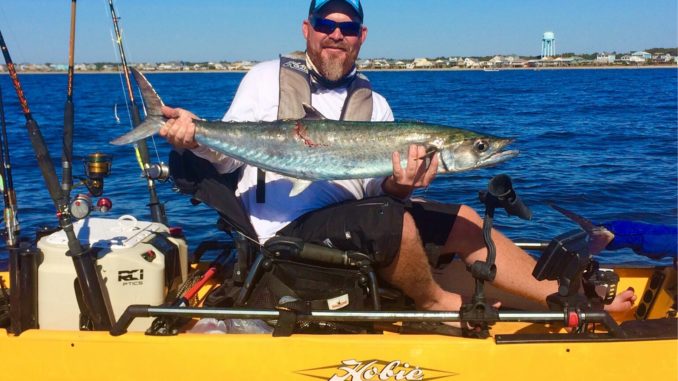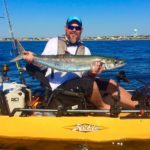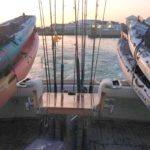
Piggy-back on big boat to distant fishing holes
The universal appeal of fishing from a kayak includes the ability to fish in backwater, off-the-beaten-path locations that no powerboat or wading angler can reach. The trade-off historically has been that there are some places that a kayaker cannot reach because of the distance from a suitable launch spot.
Part of that problem is solved using an increasingly popular mode of kayak transportation called mother-shipping. In days gone by, mother-shipping might have been frowned upon by paddling purists because getting to the fishing grounds requires a gasoline-powered motor. With the increasing popularity of kayak motors, this stigma is diminishing as the experience of targeting, hooking and catching fish from a kayak is what matters most.
As the name mother-shipping implies, kayak anglers with access to a larger, power vessel can hitch a ride and allow the powerboat to cover the distance to the fishing grounds. Once the destination is reached, the smaller boats are deployed, allowing kayak anglers the opportunity to tackle either groups of fish or species of fish to which they would otherwise have no access.
Mother-shipping kayaks can be as simple or as complex as you want to make it. Mike Eady of YAK Kayak Fishing and Outdoor Guides in Myrtle Beach, S.C., began offering trips for kayak anglers so they could fish new places and/or places other kayakers rarely get to experience.
“One of our favorite trips is out to the Winyah Bay jetties. That’s 14 miles from the closest launch spot,” said Eady (843-246-0045). “We also do trips out to the nearshore reefs, which are 3 to 10 miles offshore.”
Eady and his partner, Johnny Wigfall, mother-ship kayaks from a 21-foot Carolina Skiff. The boat has an 8-foot beam, which allows them to carry up to four kayaks on a mother-ship outing.
“We’re installing racks on the boat that will make the kayak transport smoother,” said Eady. “We also provide the kayaks, tackle, gear and bait with our trips, but we can also accommodate guys who want to bring their own kayaks.”
Mother-shipping trips off the beach typically target a handful of summertime favorites: Spanish and king mackerel, amberjack, bluefish and numerous species of bottomfish like black sea bass and spadefish. Cobia are another species that make for a great mother-shipping opportunity, but South Carolina’s season is closed this year; North Carolina’s May 1-Aug. 1 season offers some opportunities.
The beauty of mother-shipping is it allows more room to store gear and tackle, but particularly live bait, which is very productive for a number of species during the summer.
“We will target fish with artificial lures. We do a lot of vertical jigging, but we also carry a live-bait tank on the mother ship, so kayak anglers don’t have to worry about keeping a whole day’s worth of bait alive in the kayak,” Eady said. “They can come back and re-supply from the mother ship.”
Getting to the fishing grounds — and which fishing grounds — has a lot to do with the forecasted weather. On windy or rough days, he might not be able to get out on the mother ship, but there is always inshore fishing from several car-top spots.
For nearshore trips, Eady likes to pay particular attention to the currents and their projected strength. Even if they are running fairly hard, he can balance that by using the mother ship as a tender.
“The captain stays in the mother ship, and we like to stay connected by hand-held radio,” Eady said. “A lot of time we will do a drift trip where the mother ship and the kayaks just go with the current. Once we have drifted across the area we want to fish, we tether the boats up to the mother ship, tow them back upcurrent and start all over.”
Another option, particularly if bottom-fishing, is in the plan or kayakers want to chase fish around the edges of the reef, is to anchor the mother ship and deploy a long tether line behind it. This allows kayakers the choice of either tying off to the mother ship and fishing straight down or pedaling/paddling out to the edges of the reef and later attaching to the tether line if they need a break from the current.
“We tailor our trips to the experience level of the angler,” Eady said. “If we have experienced kayakers, we will stay in the boat and tend to those guys. If the kayaker wants a guide in the water with them on a kayak, one of us will be there to show them how to fish on the reef.”
Another benefit of the mother ship is that if any of the kayakers want to take a break, they can tie up, climb back inside the boat and hang out.






Be the first to comment